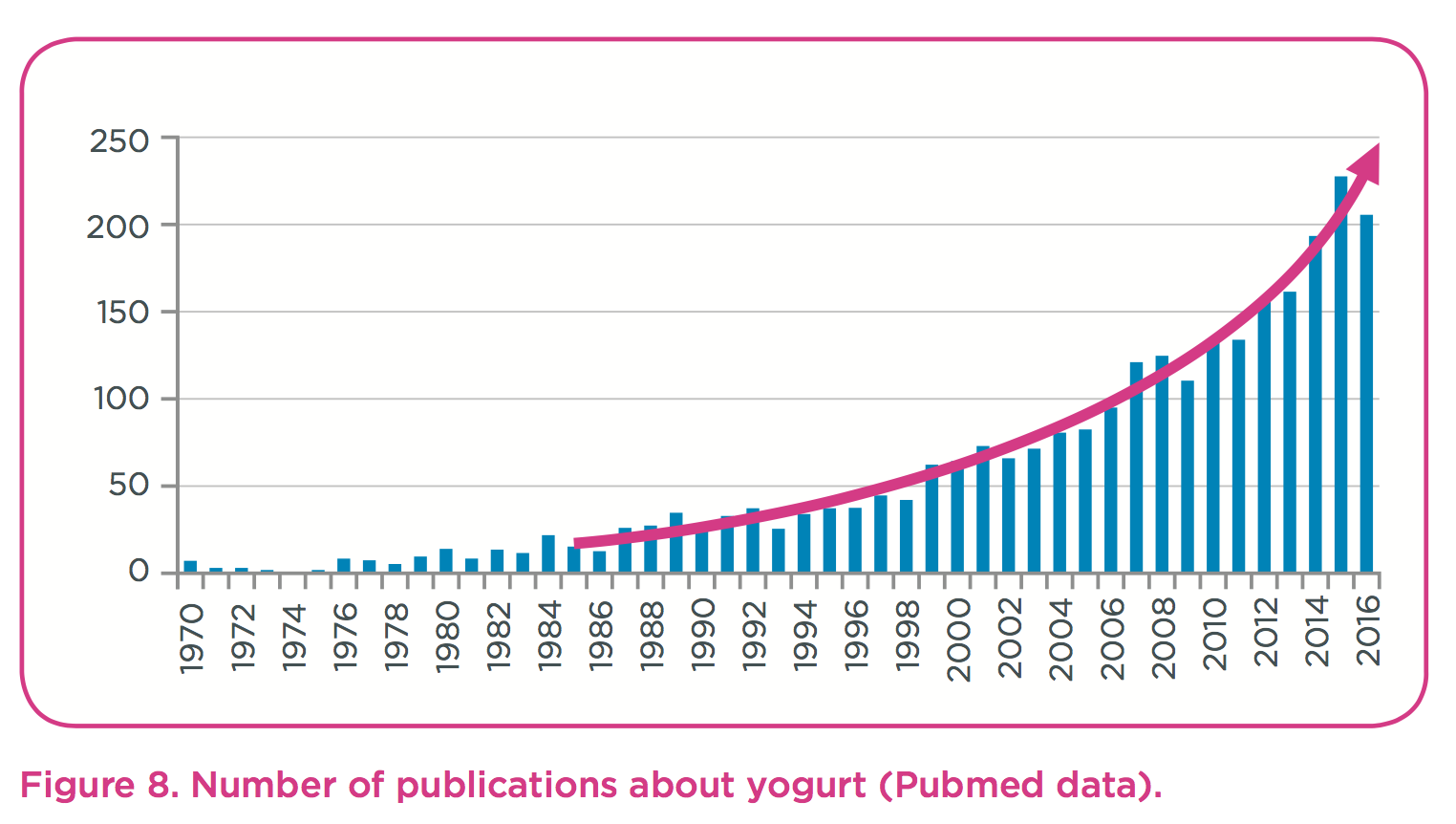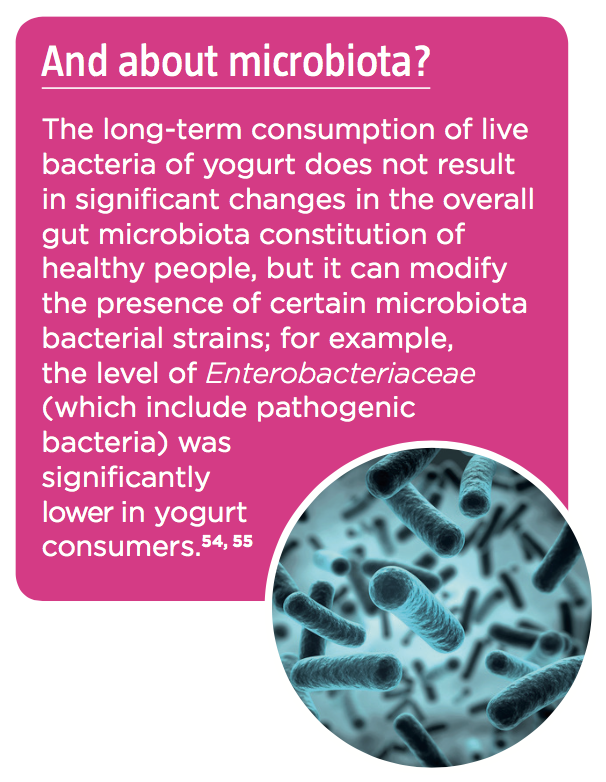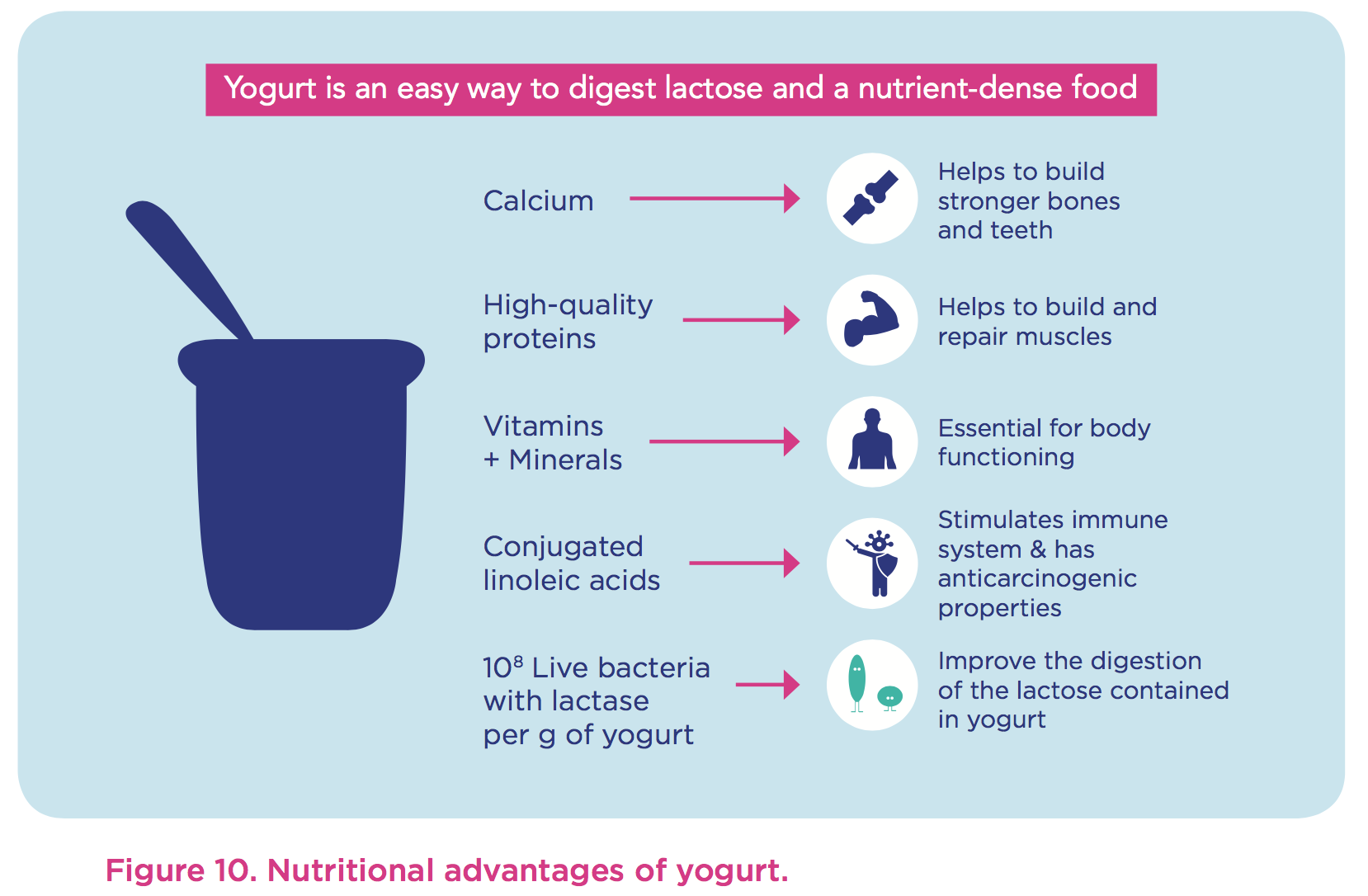 As a nutrient-dense food and fermented milk product, yogurt contributes to meeting daily macronutrient and micronutrient recommendations and to reducing possible health risks in vulnerable groups.
As a nutrient-dense food and fermented milk product, yogurt contributes to meeting daily macronutrient and micronutrient recommendations and to reducing possible health risks in vulnerable groups.
Nutritional advantages of yogurt
Yogurt is a predigested food, which contains a lot of nutrients, such as carbohydrates, proteins, lipids, minerals and vitamins. (38)
Six reasons to eat yogurt:
1. Yogurt has a similar micronutrient composition to milk, generally with a good bioavailibility and affordability. (39)
2. Yogurt has a low energy density (Figure 9).
3. Yogurt is a good source of calcium and other minerals such as magnesium, potassium and zinc. It is also low in sodium. Yogurt consumers have overall a better calcium intake than non-yogurt consumers. (40-42)
4. Yogurt contains B (B1, B2, B3, B6, B9 and B12), A and E vitamins. (40)
5. Yogurt is an excellent source of high-quality proteins, whey and casein proteins, which can lead to a reduction in appetite and aid muscle and bone growth. (43, 44)
6. Yogurt has a higher concentration of conjugated linoleic acids than milk. (13) Conjugated linoleic acids are reported to have immunostimulatory and anticarcinogenic properties. (45)
Yogurt consumption helps to improve the overall diet quality.
Five extra reasons to eat yogurt:
1. Recent scientific studies have reported that yogurt consumers have a better overall diet quality than non-consumers:
indeed, regular yogurt consumers have a more diverse and balanced diet that respects the dietary guidelines regarding nutrient intakes and food choices (more fruit, more whole grains, less processed meat, less refined grains…) than non-consumers. (46-49)
2. Adult yogurt consumers tend to have healthier lifestyles, are more likely to be physically active and are less likely to smoke than non-yogurt consumers are. (49)
3. Yogurt consumption could also be involved in the control of body weight and energy homeostasis, since analysis of cohorts has shown that regular consumers of yogurt gain less weight over time than non-consumers. (50-52)
4. Yogurt consumption is also associated with lower risk of type 2 diabetes. (51, 52)
5. Yogurt consumption is associated with a better metabolic profile in adults and children: lower levels of circulating triglycerides and glucose, lower systolic blood pressure and healthier insulin profile. (40, 53)
Conclusion
Lactose intolerance is not a life-threatening condition but it can impair the quality of life. A total avoidance of dairy products is not only unnecessary for lactose intolerants, it also represents a risk of an unbalanced diet and the occurrence of nutrient deficiency such as insufficient calcium intake, which could lead to adverse health effects.
In order to prevent any nutrient deficiency, persons who experience lactose intolerance https://africacasinos.co.za/, can still enjoy dairy and maintain a healthy and balanced diet by adapting their eating habits:
1. Consume yogurts that contain live bacteria, which improve the digestion of the lactose contained in yogurt.
2. Consume cheeses that contain low or no lactose.
3. Consume lactose-containing foods in modest amounts throughout the day, during meals, not more than the equivalent of 2 bowls of milk.
Thus, yogurt is a convenient food for all, and it represents a good alternative to keep a balanced diet, particularly for lactose intolerants.







